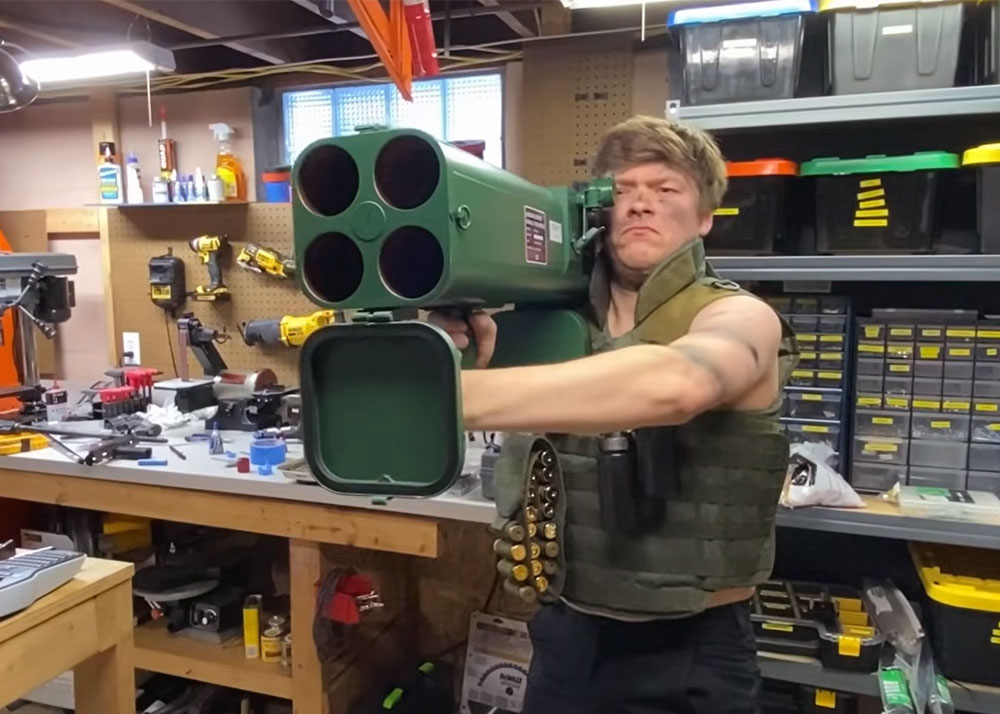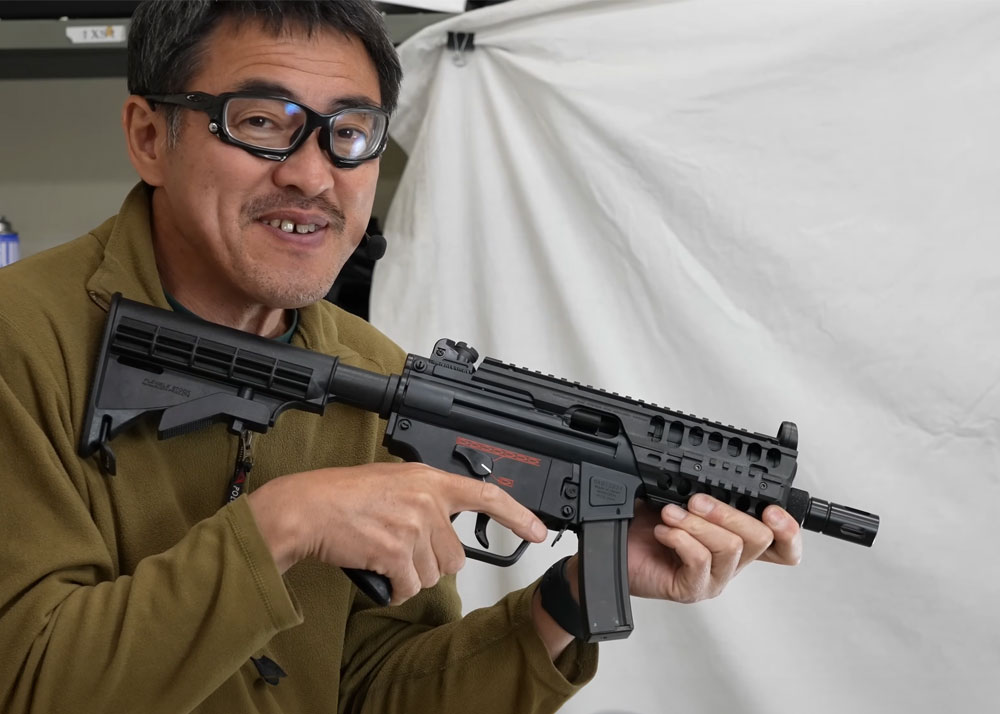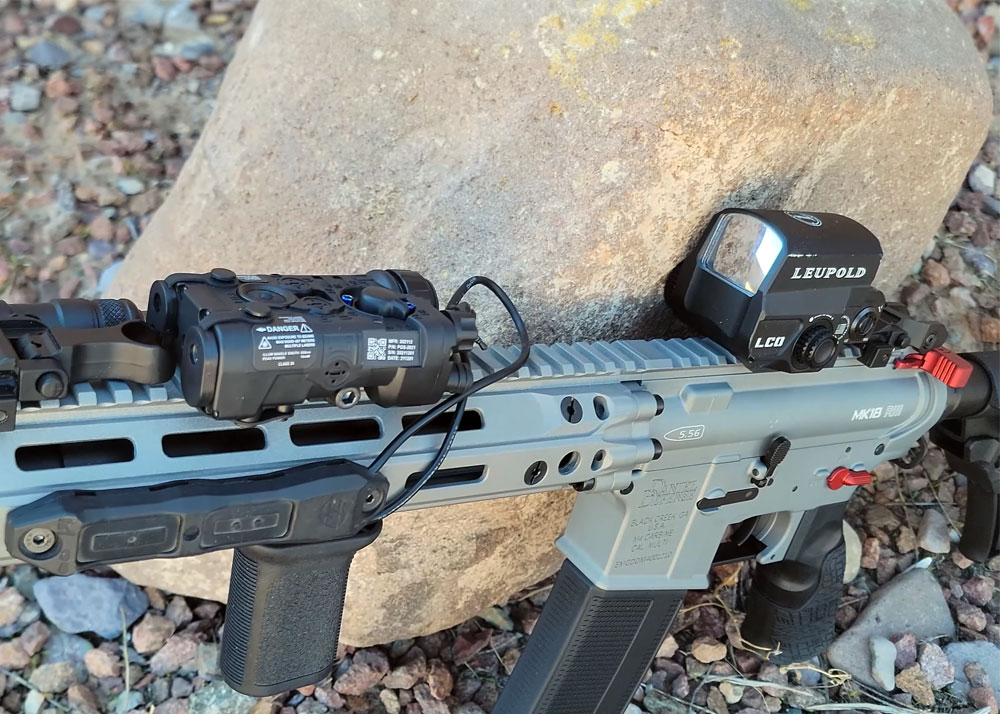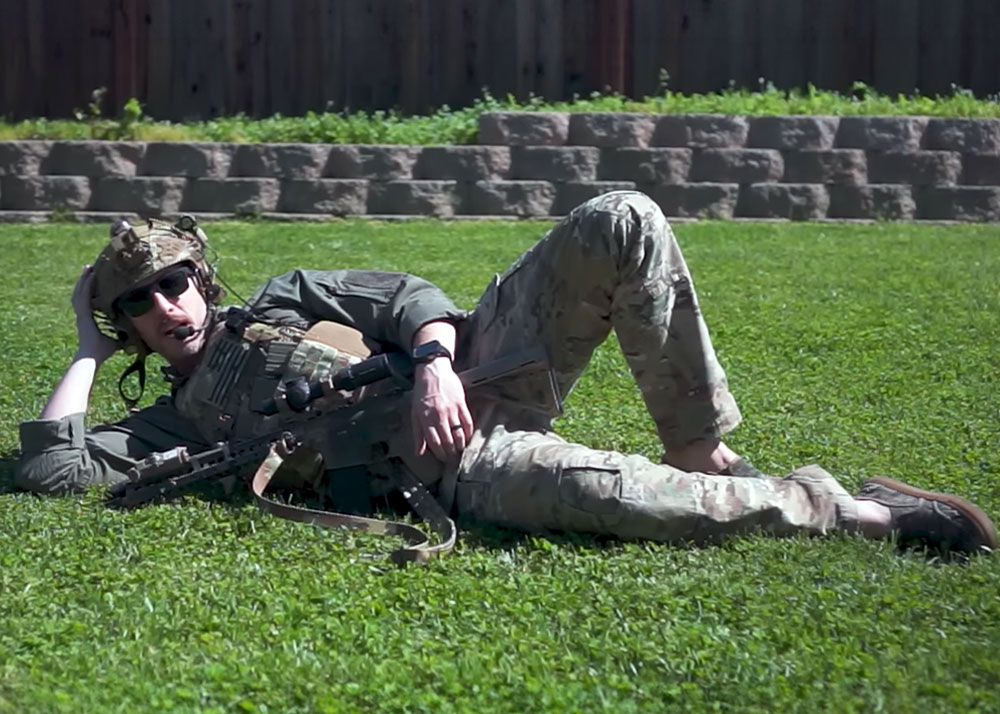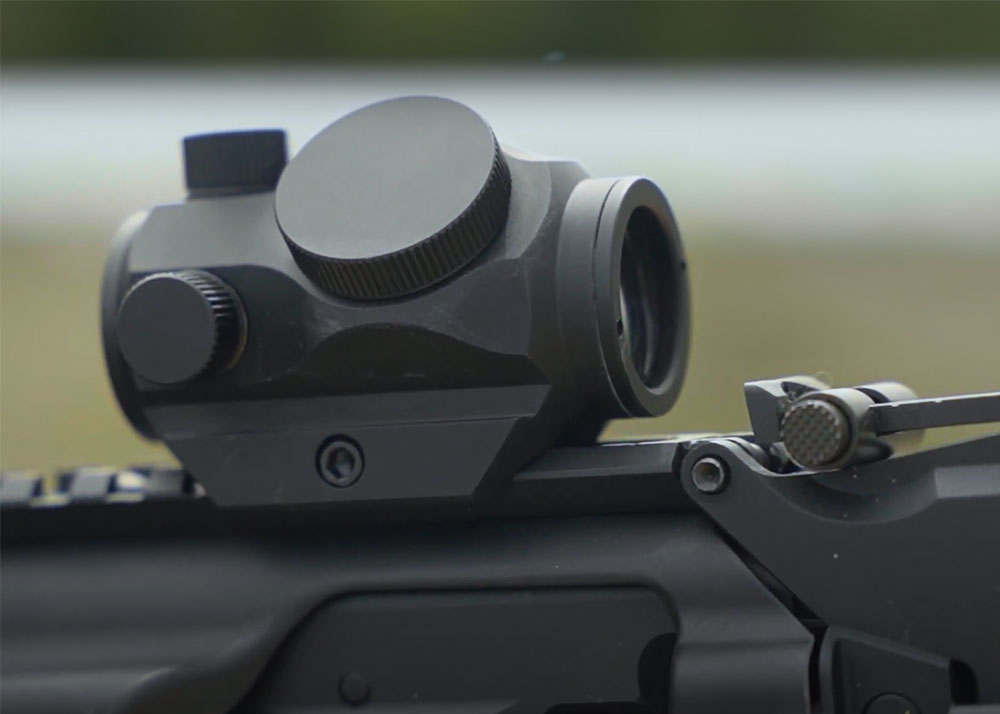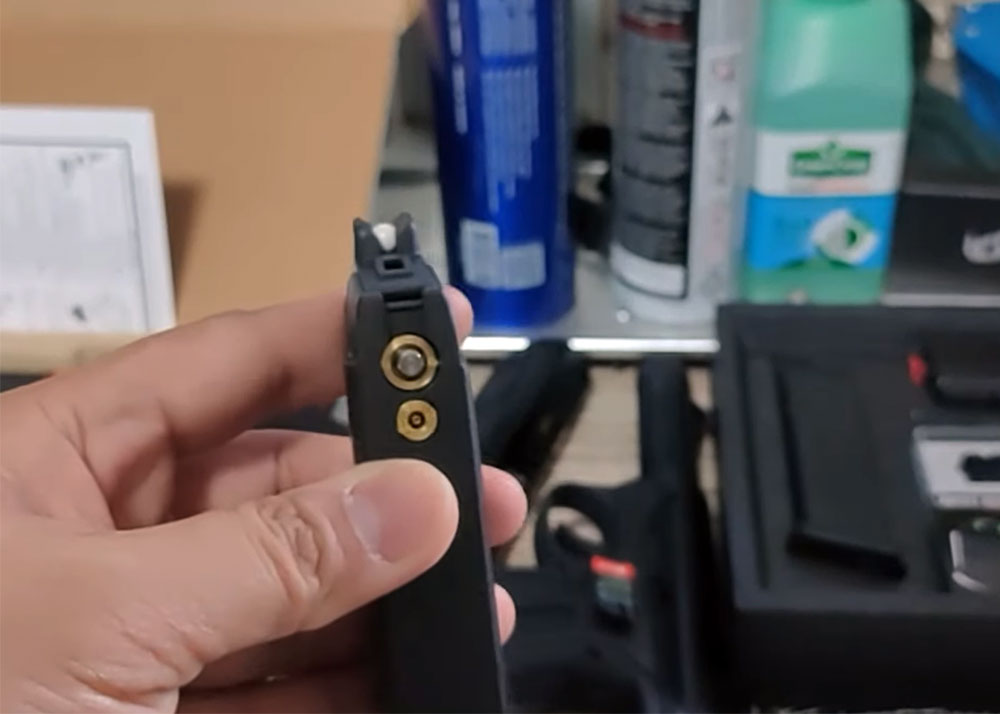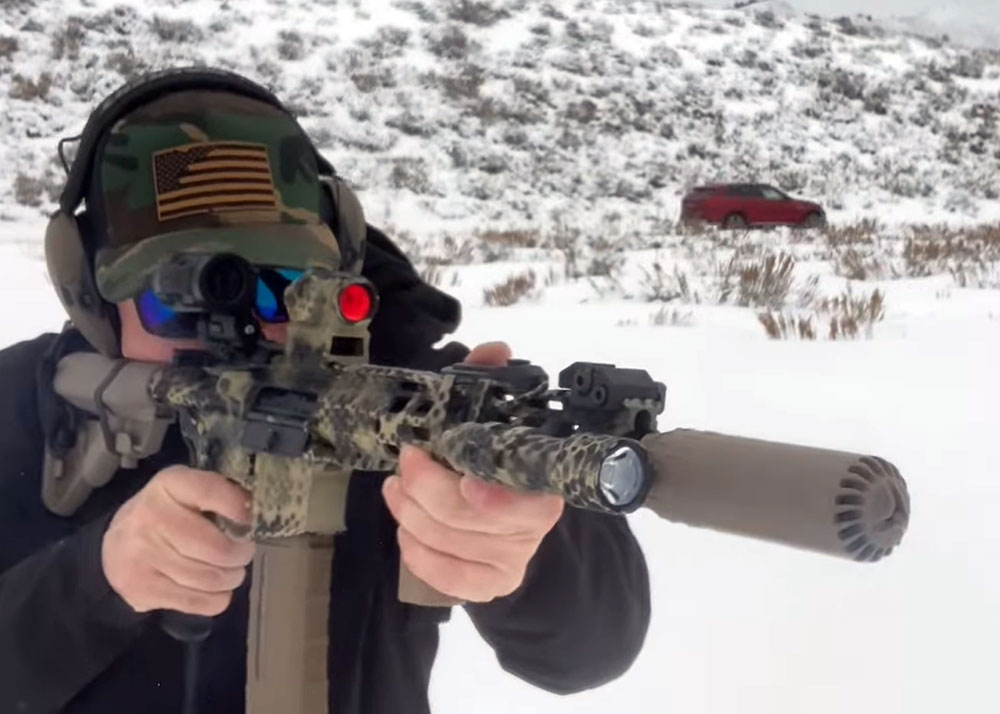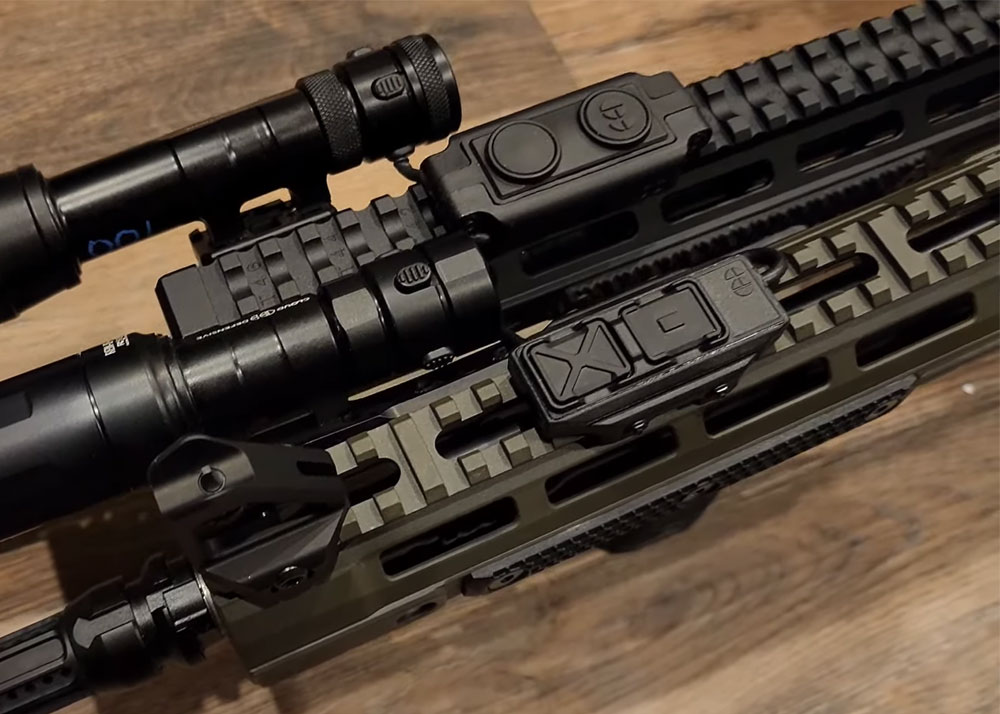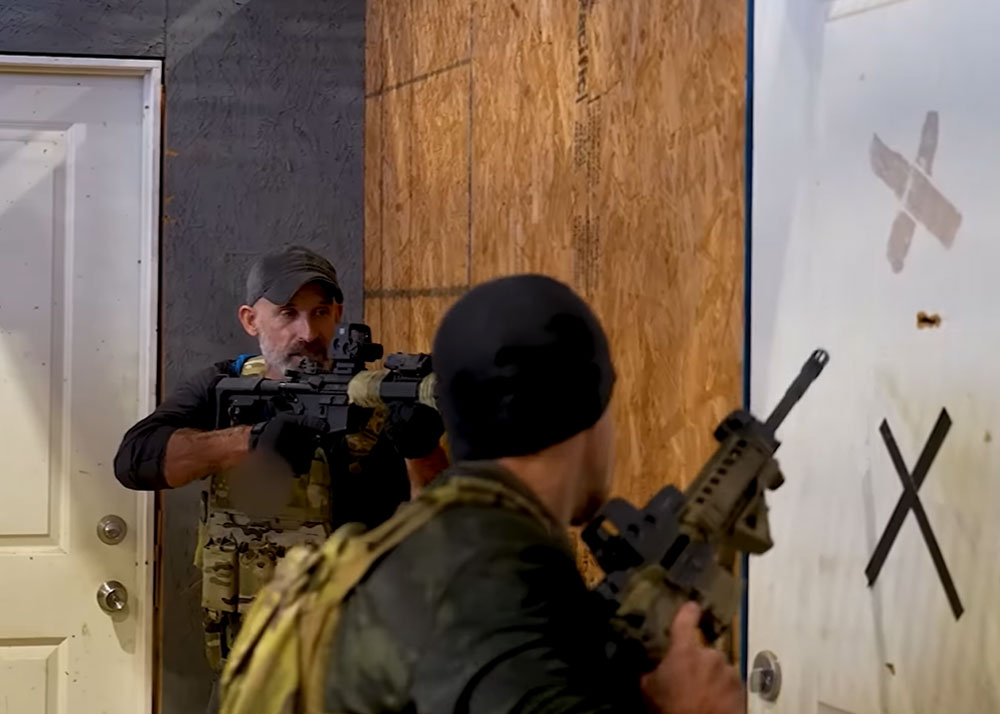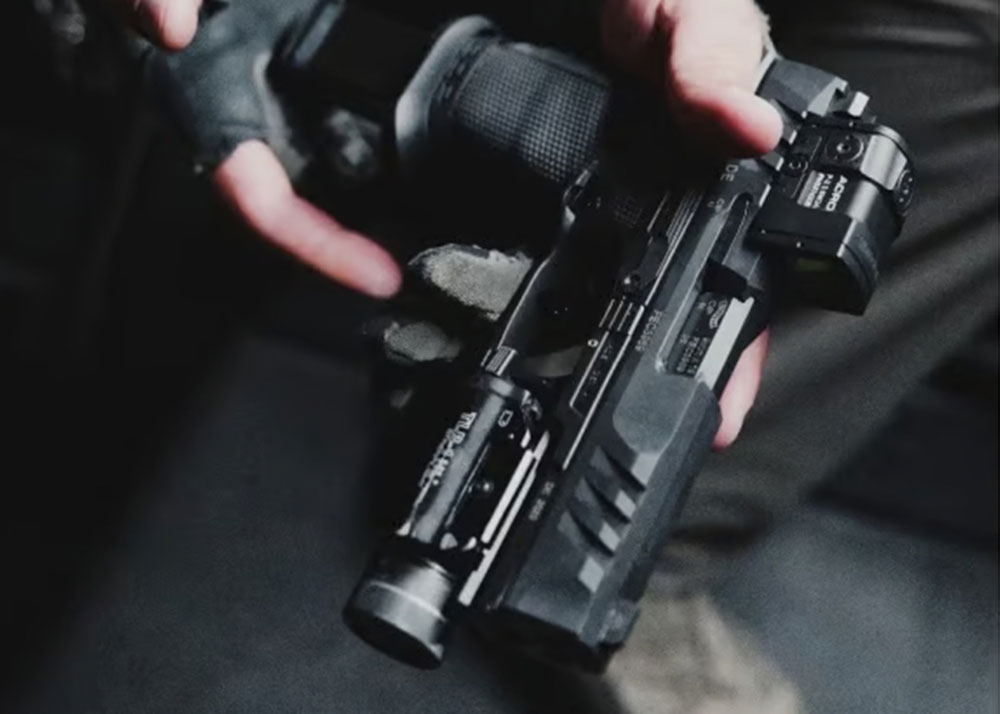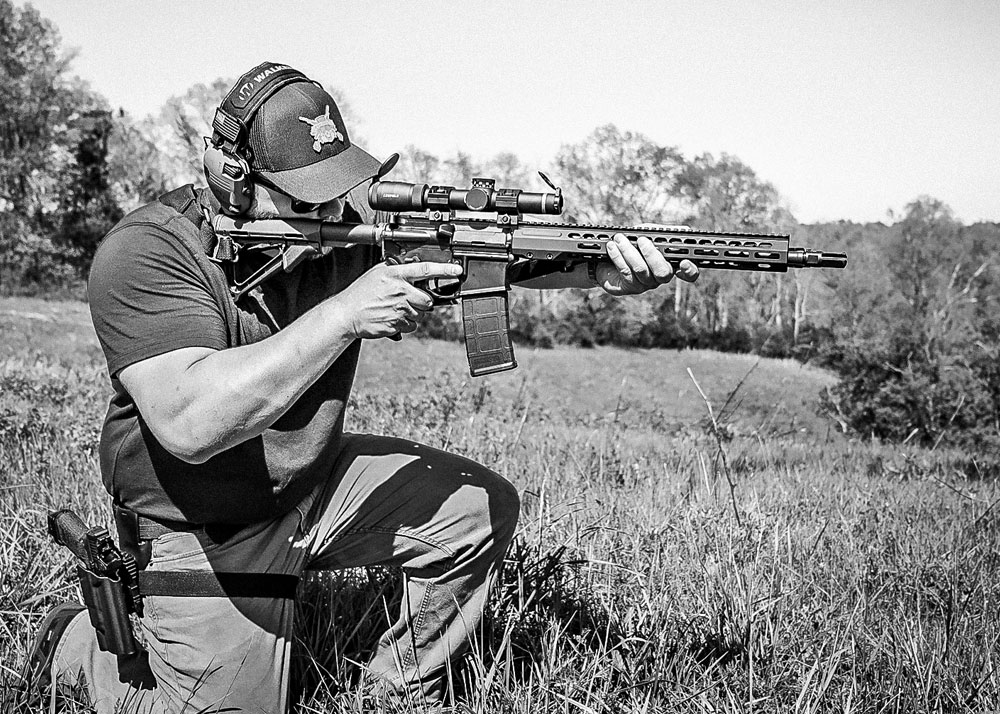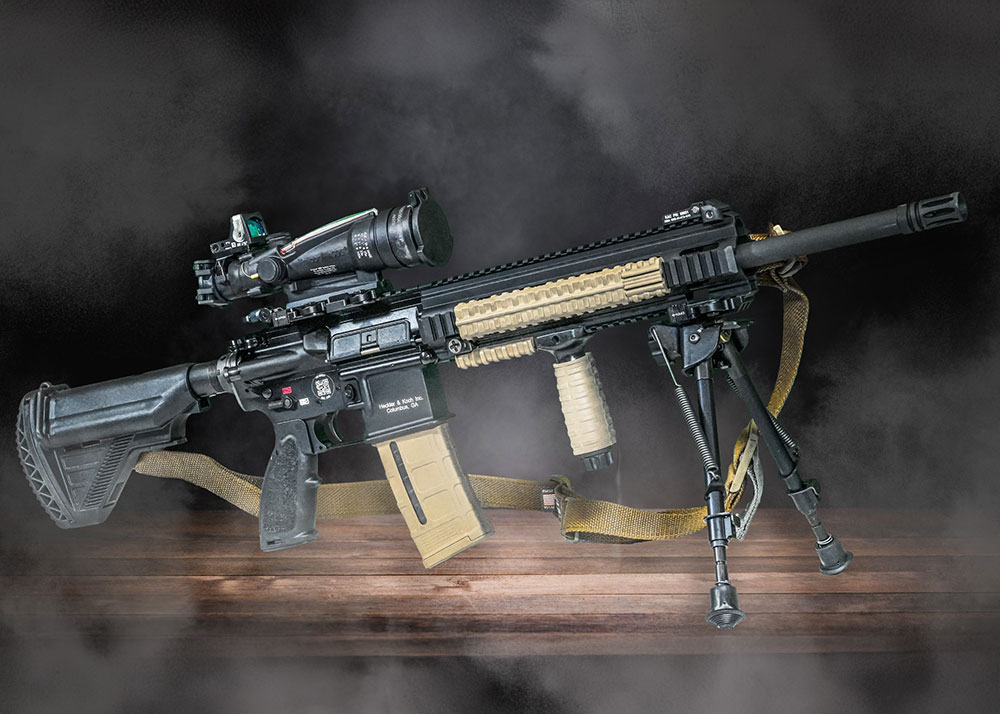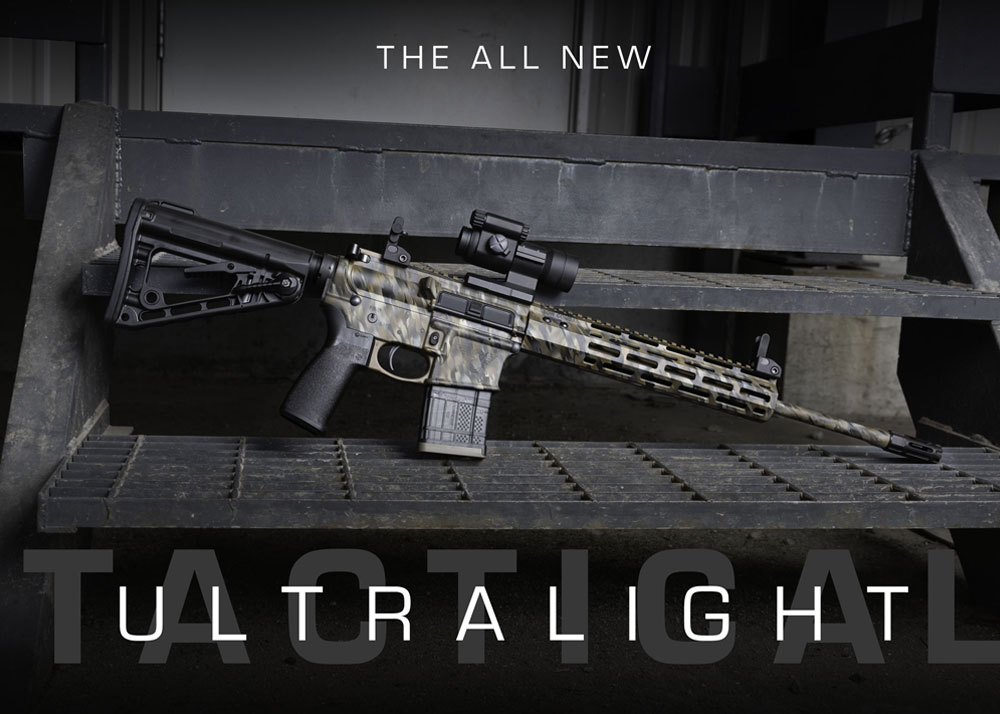RedWolf Systema PTW5-A4 Review
OptimusPrime
07 Mar 2008
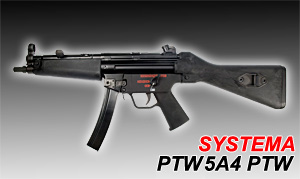
Anticipating the arrival of the first shipments of the Systema MP5A4 PTW is getting to be a little bit frustrating for those who have placed their pre-orders. Just a few days ago, it was announced that the first shipment will be delayed due to some kinks in the production line. So the waiting is not yet over, still not time to put your TM, CA, ICS, JG, CYMA, and whatever MP5 airsoft replica you have there into your storage area. Just to keep the hopes high that the Systema MP5 is definitely a real thing, RedWolf Airsoft now makes a writeup of the upcoming product:

BRIEF HISTORY OF THE SMG
As we all know, weapons development makes the biggest leaps right before and during wars. While individually not as powerful as the nuclear weaponry developed during World War II, the submachine gun from the first big fight has spread worldwide and made significant changes to combat tactics on a smaller scale everywhere. It has left direct offspring behind such as the PDW (Personal Defence Weapon) weapon type, and the combat use of the SMG provided valuable ideas that led to the development of the assault rifle in the 40's.
Even though the idea of shooting pistol cartridges with a short rifle-like weapon seems obvious afterwards, it wasn't until 1918 when the first submachine gun to enter service was seen: The Italian Beretta Model 1918. A few weeks later Germans adopted the Bergmann MP18, which was the first one to see actual combat. Many American historians would argue that the Thompson submachine gun was the first project to be started out of the three, and for this reason should be titled "the first".
The first experiments were made by adding a stock and larger magazine to a pistol. Some models were converted to have the ability of full auto fire. The stock helped to point the weapon better, and to provide stability during rapid fire. A 32 round "snail" magazine was developed for the Luger P08 pistol. Adding accessories to a pistol not designed for this use led to a result of compromises, but they were promising so the design was continued to create a weapons family of its own. The barrel length was increased not that much for accuracy, but to gain a higher muzzle velocity from the relatively low-powered pistol cartridge. Finally the weapons were robust and compact, and were ready to be used as "trench brooms".
After World War I during the 20's and 30's, many countries developed their own submachine guns. The French designed the MAS-38, the Germans developed the MP18 further into the MP28/II and MP38, the Brits initially copied the MP28 and called it Lanchester, but proceeded then to develop the cheaper STEN. The Finns used a design of their own, the M31 to deflect the Soviet invasion. Meanwhile in America, the Thompson SMG had undergone some modifications and gained a notorious reputation in the hands of gangsters. The submachine gun had found its users, but there was still an advancement on the way...

BIRTH OF THE MP5
In 1964, a group of German engineers at Heckler & Koch started to work on a new weapon in the HK54 weapons family. Initially called "Project 64", the MP5 (Maschinen Pistole) entered production in 1966. It was adopted by the German border police as well as the Swiss police the same year. While "Maschinen Pistole" would literally translate to "machine pistol" in English, the pair of words have a different meaning. Machine pistol means a fully automatic pistol such as the Glock 18C, but Maschinen Pistole in the German language actually means what we English speakers call a submachine gun.
Unlike virtually all of the other SMGs up to then, the MP5 had quite a few ingenious features, that made it an instant hit and secured success for decades to come. First, it fires from a closed bolt, which means that a loaded weapon has the bolt forward and a round chambered. Upon pulling the trigger, a hammer falls and ignites the primer. This results in a far better first shot accuracy compared to the traditional open bolt designs, where pulling the trigger releases the heavy bolt from the cocked position, which chambers the round and ignites it.
Another unique feature of the MP5 is that the bolt weight is drastically reduced, thanks to the downscaled roller-delayed bolt system derived from the G3 rifle family. Normally SMGs simply have a heavy enough bolt to resist the recoil and pressure from the cartridge, but the roller-delayer allows for much lighter moving parts.
The MP5 was indeed an instant hit and has become an icon-like weapon in movies and games. While many military organizations have moved away from the 9 mm pistol cartridge to shorter assault rifles with a more powerful cartridge, the MP5 is still widely seen in Law-Enforcement and special operations use.

...AND THE AIRSOFT VERSION
Being a popular and famous weapon in actual use as well as movies, it was no wonder that the MP5 has been one of the essential long arms (as opposed to handguns) to include in the line-up. Various spring and gas operated models have been produced to capture the feeling of an MP5, and even the real firearms industry produces MP5 look-a-likes in various calibers to capitalize on the easily recognized shape. But back to airsoft guns. Tokyo Marui didn't hesitate to produce the MP5 family as an AEG in the early 90's, but the stage of development was not that far at that point and it can still be seen in the AEG models of the MP5.
The receiver of traditional AEG MP5 models is a lightweight plastic shell produced from two halves like a clamshell, and it is common for the receiver halves to leave an ugly gap to reveal the toyish nature of the model, as well as make the magazine fit loosely and rattle sideways. The cocking tube attachment isn't that strong and a frequent point of breaking. Although this has been updated in the Tokyo Marui HG versions, MP5s with metal receivers still suffer from this weak point. The inner barrel runs loose under the cocking tube, and has no solid support after the steel collar right in front of the receiver. In the worst case, the cocking tube can affect the natural direction of the barrel and wreak havoc on accuracy.
Previous AEG models represent almost the entire selection of MP5 models, but none of them have the distinct Burst feature added (beyond cosmetics such as on the TM MP5J). As such, the models sold as Tokyo Marui MP5A5 and A4 for example should actually be called the A3 and A2 despite the pictogram trigger group, because they lack the Burst!

EVOLUTION OF THE AIRSOFT SMG: SYSTEMA PTW5-A4
The idea of producing a PTW5 dawned on Systema three years ago. As the PTW M4/M16 series have evolved and refined, it is only natural development to look at other models to produce, and this new SMG is a rather obvious choice. Other electric airsoft models are built around the old gearbox design with a receiver structure from the early 90's and don't have a burst feature, so there really is a gap to fill.
RECEIVER
An airsoft gun can be designed from the inside outwards, or the other way around. When you already have an excellent mechanism to shoot BBs, you can focus on the outside. As many "rough" players have found out, the AEG MP5 models are prone to snapping in two in the area where the cocking tube and receiver meet. It is the only structure supporting the front of the weapon, with no outer barrel. What Systema has done with the PTW5 receiver is like taking two birds with one stone: The whole receiver is one solid block of metal. The cocking tube is naturally also one piece with the receiver, and the material thickness at the walls is strong. To add rigidity, a solid steel outer barrel is slid into the receiver from the front, and locked in place with four screws. The cocking tube and outer barrel are connected in the front by the front sight, which adds the final touch to help these parts support each other.
PLASTICS
Looking at the beautifully machined outer barrel, it almost feels shameful to cover it entirely with the handguard. But of course you need something to hold on to, so on it goes. The front handguard is constructed from fiberglass reinforced polymer, and as such it it closer to a real gun part than the toyish plastic part of old AEG MP5s. Actually the Systema PTW5 handguard feels so solid that we would be confident to put it on a real weapon for real use. The dimensions are true to the real thing, so it would fit for sure.
Behind the receiver we find a solid stock to house the battery. It is the same FRP material as the handguard and made into one piece, so there are no connection studs and such to take up space inside: Every cubic inch is available for the battery, to make sure you don't run out of juice. The rubber butt plate doesn't snap off like on others, so you don't need to worry about the butt plate falling off and getting lost in the bushes. It takes a bit of fingernails to work around the plate and remove it, but no tools are required.
The trigger group is also a one-piece FRP part, with all the markings - and functions - found on the real one. The pictogram with three bullets isn't just for show! The grip is slim and exactly the size of the real grip, thanks to the flat motor derived from PTW technology. The selector turns correctly around the center axis, instead of being offset like on all AEGs.

ON THE INSIDE
The Systema PTW5 looks and feels great and is rock solid on the outside, but what do we find under the surface? As already mentioned, the motor is a PTW style flat design to keep the grip small, so let's get to the gears! The trigger group of the MP5 is more generous in terms of space, so the PTW M4/M16 type planetary gear system has not been adopted. Instead, the gears resemble the AEG upgrade gears produced by Systema, but are not the same part. For example the sector gear is free of the cut-off cam and tappet plate nub, but instead is made to be easy to detect for the optic sensor of the circuitry. On the sides of the gear train, a coupling gear has been added to transfer the selector lever movement to the other side for ambidextrous use. This approach allowed to mount the selector lever axle in the center, so it actually rotates around the correct axis.
The movement of the gears is "sniffed" by an optical sensor, which is linked to a micro chip that controls the shooting cycle via high power MOSFETs. No matter if you are shooting on semi, burst or full auto, releasing the trigger will tell the chip to stop shooting after that cycle is finished. With the selector set on semi or burst, the chip will simply stop the cycle even if you continue to keep the trigger pulled - but even the quickest tap on the trigger will finish one cycle at least. The burst works correctly like on the real MP5, which means that if you release the trigger before the burst is finished, the gun will stop firing, instead of stubbornly shooting all three shots with one tap of the trigger.
From the gears the energy is transfered to the piston. The entirely cylinder unit is actually similar to the unit we have come to love in the PTW M4/M16 series, just with a different shape on the outside to fit the PTW5 receiver. This means that the piston body size is reduced along with the spring (and spring guide) size, to allow more room for a stronger tooth rack. The tooth rack is all steel made, and sits securely in a captive slot on the underside of the polymer piston. The piston body is solid all the way around, so it is stronger than traditional AEG pistons with an all metal tooth rack.
When the sector gear pulls the piston back, the nozzle remains attached to the piston head for a while, moving back and allowing a BB to move up to the feeding line. As the piston retreats further, the spring-loaded piston head stays behind for a while to keep the nozzle back a little longer, until the O-ring inside the piston head lets go of the nozzle. Then the respective springs push the nozzle to the front chambering the BB, while the piston head is pulled back against the front face of the piston body. The piston is released, shooting the BB out, and the mechanism is reset for the next shot. This all happens in a fraction of a second, and you can shoot as fast as you can pull the trigger.

FEEDING DEVICE
Included with each PTW5 is a regular type magazine. It has a stamped and spot-welded steel exterior with blued finish, and it looks and feels just like a real magazine. If it weren't for the lack of feeding lips, we could have thought it is an actual magazine to feed 9x19 rounds! These magazines will be sure to withstand rough handling, and hold 40 BBs each. The amount may sound small, but we are sure MilSim players will be happy to underload these to 30 rounds, as is the real capacity. The magazine feeds each and every round thanks to the extended follower, so out of the 40 BBs the magazine will feed 40. When you remove a magazine from the PTW5 with rounds still in it, you will lose one BB, which is an improvement over the four BBs you lose when you do the same with an AEG.
The top of the magazine towards the rear shows an interesting feature, which is of course standard on PTW models but still not found on any other AEG: When the last BB is fed, a stud protrudes from the rear of the magazine, and activates a microswitch inside the magazine well. This makes the PTW5 stop firing until you reload. While not found in the prototype we used in the video, the feature will be added to the production version.
ACCESSORIES
Despite being a new model, the markets are already saturated with accessories to "tacticalize" your PTW5. Thanks to the real dimensions, most real steel accessories will be a direct fit. The muzzle is attached to the outer barrel with a thread, and a threaded part to attach a silencer will be available from RedWolf as soon as the PTW5 is officially released. To attach any scope on the weapon, we found that the G&G L.P.M for G3/MP5 Series [G-03-031] was a direct fit to the PTW5 with zero modifications!
PERFORMANCE
Systema decided to release the PTW5-A4 as an M90 version now, but the mechanism allows for a far higher tension spring to be used later on. The heat-treated steel gears, all steel tooth rack on the piston, high torque motor and computer controlled FET unit allow to adjust the power simply by choosing the right battery for the spring of your choice. Up to a 12 V 2400 mAh battery can be fitted in the solid stock as standard. Out of the box, our test unit produced velocities slightly above 320 fps with a high of 325 fps with 0.2 gram BBs. This complies precisely to the 0.98 joule energy limit that has been enforced in Japan for some time now, and is perfect for CQB and up to medium range engagements outdoors.
The inner barrel has a 6.04 mm bore as now is the standard for all PTW models, and the outer diameter is a whopping 10 mm compared to the 8.5 mm of typical AEGs. The inner barrel is fitted accurately to the outer barrel with a minimal clearance, to further reduce resonance. In our accuracy tests the MP5 was repeatedly capable of groupings below 100 mm (4") from 20 meters (65'), and the smallest grouping of 37 mm was achieved from 10 meters.

A quite nice grouping: five shots from 10 meters landed within a 37 mm max distance.
-----
For understandable reasons, we have not had the chance to take the Systema PTW5-A4 out for a skirmish just yet, but based on the experience gained with the one we tested, it should be very effective in MilSim fields. As the other PTW models, it is not designed to be a BB hose to be fired continuously for hundreds of rounds, so maybe the hardcore speedballers will still look for a lightweight MP5 to equip with a drum magazine. For other uses, the PTW is a really exiting new way of replicating the MP5, and thanks to the robustness could be described as something between the blue training dummy and the real working firearm. Sure it doesn't shoot a 9 mm piece of lead and copper at 400 m/s, but it looks and feels very much like it could!
RedWolf Airsoft is the official distributor for Systema in Asia, UK and parts of Europe. The Systema PTW5 is available for Pre-Order with FREE SHIPPING. Click here to ensure you're in line to get yours!

